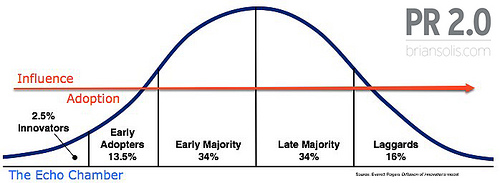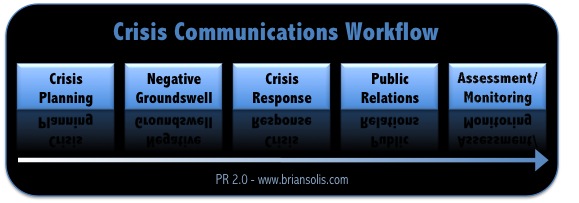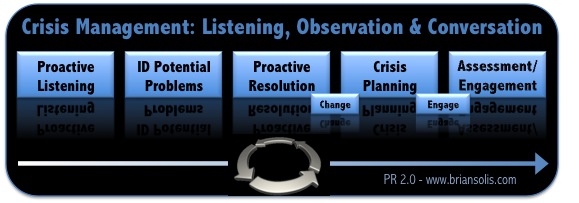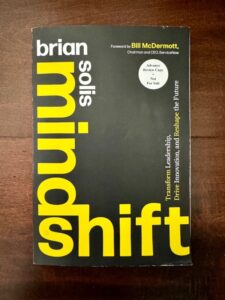Businesses, individuals, and organizations will, from time to time, make honest mistakes or in some unfortunate cases, intentionally support unethical decisions to dissuade or conceal something significant from its public.
Whether it’s an oversight or a matter of deception, savvy companies usually employ and deploy a crises response team to prepare for, manage and attempt to positively spin the potential backlash from customers, partners, and employees related to almost anything.
Crisis communications is a branch of PR that is designed to protect and defend an individual, company, or organization, usually from a reactive response, facing a swelling public challenge to its reputation, brand, and community.
Throughout the course of history, we’ve learned that all that’s required to ignite a negative firestorm is a spark from a single voice or an organized congregation.
If a conversation takes place on the Web and you’re not there to hear or see it, did it really happen?
More often than not, we miss the very things that provide insight into a future response simply because we’re not conditioned or trained to proactively discover and diffuse threats or negative experiences.
Our weakness, however, is also our opportunity to manage and also respond to any potentially damaging or menacing public groundswell.
Conversations related to your brand, company, executives, products, and competitors take place each and every day, without our knowledge and perhaps worse, without our participation.
In the era of the Social Web, a story, and the ensuing public recruitment, rallying, and support, can rapidly spread unlike any crisis wildfire witnessed or experienced in previous generations.
Social Media is pervasive. At the very least, it is transforming how we communicate with each other and also how we discover and share information. As the adoption of Social Tools and applications progresses from the left to the right of the bell curve, Social Media will simply coalesce back to “the Web.” But, its migration, exploration, experimentation, and education will only contribute to its significance and resilience and ultimately change behavior and expand the infrastructure for corporate communications in the process. Regardless of genre, the sum of all social channels today equate to a powerful, influential, and revolutionary archetype for exposing and diffusing public opinion.
Perception is formed through the unique, individually-filtered experiences we each bring to the table. In that regard, our brand, and more specifically, our actions are open to public interpretation, support, and dissection. It’s what you say about you, what they hear, how they share that story, and how you weave that insight into future product and service iterations, communications, corporate infrastructure, and public conversations.
The tools and platforms available today are sophisticated, evolved, and designed for social distribution and redistribution. The Social Web forces a new level of understanding and participation in order for all communications professionals, in addition to crises response and reputation management teams, to understand its dynamics and the prevalence of information, positive, neutral, and especially negative.
To date, crisis communications and reputation management were relegated as a reactive response, while the groundwork for a potential predicament and the development of strategic communique is among the best practices for proactive crisis planning.
The traditional crisis communications planning and response workflow:
– Crisis Planning
– Negative Groundswell
– Crisis Response
– Public Relations
– Assessment/Monitoring
In the Social Web, I propose that many, if not a majority of potential crises are now avoidable through proactive listening, engagement, response, conversation, humbleness, and transparency (repeat).
I’d like to introduce you to an old, but new again, dynamic process to integrate into the existing corporate communications and marketing workflow. Today’s social tools and communities that can work against us, can also work with us, when proactively managed and embraced with an open mind, sincere intent, and genuine participation.
– Active
– Listening
– Observation
– Conversation
– Learning
– Planning
– Continued Adaptation and Engagement
The art and science of proactive listening, observation, and participation will not only inspire the creation of in touch, relevant, and poignant PR and marketing strategies, but will also dramatically reduce the potential for reactive response and crisis communications programs. Crisis communications teams can also partner with those responsible for monitoring online brand reputations (ORM – online reputation management) or vice versa, to jointly listen, respond, and incite change from within. This creates a more effective “public relations” organization.
The point is that this is about proactively diffusing visible, but not yet large-scale predicaments before they’re full-blown public crises. And, also through direct listening, engagement, and actively addressing concerns both inside and out of the organization, we’re diverting the momentum from tropical storms before they have an opportunity to form unforeseen and unanticipated hurricanes. It’s the ability to avoid a storm without knowing a storm was brewing by identifying weaknesses and opportunities as they emerge.
This is community-driven communications in its purest form which begets a community-focused and customer-centric organization.
Everything starts with openness and the ability to learn and adapt. It’s the acceptance that it doesn’t matter if the customer is always right. After all, a happy customer will share their good fortune with a group of friends and peers, but an unhappy customer will tell everybody.
Perception is everything.
For communicators, it’s our role to actively listen and translate conversations into actionable next steps. It’s not an automated process. It requires dedication and empowerment. Much of this responsibility is falling upon community managers and the new role of research librarians who are quickly acclimating to online conversations and how and where they apply to the internal decision makers, traffic coordinators, and metrics analysts. By partnering with these new, socially adept resources, Public Relations can can more accurately and genuinely participate with influencers, whether they’re media, analysts, bloggers, or tastemakers. When we step back and assess our markets, we just may find that they’re collectively one in the same.
What if you don’t yet have these roles or resources to help you listen and follow meaningful conversations? It’s not impossible for you to proactively monitor conversations and the cultures and behavior associated within each digital society in order to identify and prioritize opportunities for engagement, reform, and evolution.
Start with using free search blog search tools such as:
– blogsearch.google.com (set up Google Alerts via RSS or email)
– Technorati
– Blogpulse
As we all know, or should know, the social web extends far beyond blogs, relevant online conversations are pervasive and rampant in social networks and microforums as well. In that regard, be sure that your initial waves of search include:
– search.twitter.com
– Ning
– Facebook
– Google and Yahoo Groups
– Uservoice
– Getsatisfaction
For those with a moderate budget to evaluate dedicated SRM (social media relationship management) or ORM tools, consider:
– Trackur
– BuzzGain
– Radian6
– BuzzLogic
– BrandsEye
Search for keywords related to your business, such as the company and product name, key executives, as well as scouting discussions for the “suck” or “die” factor. This includes adding a combination of the following criteria in your search process:
– “product+sucks”
– “company+sucks”
– “die+company”
– “i+hate+company”
As the Web itself grew in pervasiveness, it also paved the way for customers to easily launch sites to vent publicly. Examples already number in the thousands, with some capturing significant public attention including starbucked.com, ihatestarbucks.com, boycottwalmart.org and againstthewal.com.
Fairwinds recently released a study that documents the power of Internet gripe sites. The Wall Street Journal explored the topic with an in-depth article, “How to Handle ‘IHateYourCompany.com,'” which explored what some companies are doing, or not doing, to protect their brands online.
In its study, FairWinds researched the Web to identify gripe sites specifically containing “sucks.com.” The study uncovered over 20,000 domains with only 2,000 ending in the phrase “stinks.com.” Of the major consumer-facing companies surveyed, only 35% own the domain name for their brand followed by the word “sucks.”
But domain names are only one of the many opportunities for customers to share their discontent, and in the new era of the two-way web, communications, customer service, and brand and reputation management teams must all work together together to actively survey the landscape to detect and diagnose negative experiences.
The Social Media and conversation landscape is a diverse universe. In order to identify a potentially dangerous asteroid on a glancing or full-blown collision course with your brand, you’ll also need a powerful telescope, or, a “Conversation Prism.”
The Conversation Prism was designed to provide a snapshot view of dialogue within mainstream and vertical social networks and communities that may be consequential to your brand. Every network provides a search box to unearth threads of discussions tied to connected keywords and inherent developments, negative or positive, that may affect the company brand and reputation.
Conversations and developing crises are probable across a multitude of online channels, including:
– Blogs and Comments
– Microcommunities aka Microforums
– Social Networks
– Lifestreams
– Customer Networks
– Groups
The ensuing conversations tied to your brand can quickly and easily amass, across multiple networks simultaneously. Don’t let those conversations fall upon deaf ears.
For the first time, we have the ability to identify and address potential crises as they surface. And not only do we have the ability to engage with people to address their grievances or discontent, we can also learn from each engagement and feed the corresponding lessons, experiences, and criticisms back into the sales, service, and product development departments to change everything for the better.
It’s the difference between simply placating customers and improving our business and products to satisfy many others who would have been potentially exposed to a potential deficiency.
Customers are among the new influencers and have the tools and platforms readily available to them in order to share their experiences and potentially incite the masses.
It’s not just about the gripes we’ve identified, it’s about the dialogue and actively and publicly addressing each issue to minimize the unforeseen eruptions from those who have yet to publish or rally others against us.
While our control has been crowd-sourced, perception management and crisis communications are ours to lead. Perception is reality and it’s our responsibility to invest in the relationships and the correlated activities that will help us cultivate and manage an industry leading, market relevant, and in-tune brand.
Listen, learn, and adapt. In the Social Web, and in the real world of business, companies will earn the relationships, and the crowd-sourced brand, they deserve.
—
UPDATE:
Now available as a downloadable and printable Word or PDF file at Docstoc and Scribd.
—
Recommended Reading on PR 2.0:
– The State of Social Media 2008
– In the Social Web, We Are All Brand Managers
– New Communication Theory & the New Roles for a New World of Marketing
– Comcast Cares and Why Your Business Should Too
– Will The Real Social Media Expert Please Stand Up?
– The Social Revolution is Our Industrial Revolution
– The Essential Guide to Social Media
– The Social Media Manifesto
– Free ebook: Customer Service, The Art of Listening and Engagement Through Social Media
– PR 2.0: Putting the Public Back in Public Relations
—
Crisis Communications 2.0 Series:
Where the Streets Have Names: Learning from Bono’s Facebook Dilemma
Nike, Just Do It: When a Local Story Runs Away on the Web
Apple and the iPhone Price Bomb
The Skype is Falling
Microsoft PR Sparks a Blogstorm










Great advice (as always) Brian. Thank you for including Trackur.com in your list of tools for monitoring the conversation.
Have you read my book Radically Transparent? We have lots of tactics for crisis communication–I’d be happy to mail you a copy.
Cheers!
Andy Beal
Good Jesus this is long– but true. In his book The New Rules of PR, David Meerman Scott gives the example of Nikkon. Shortly after releasing a camera geared towards the amateur photographer, a disatisfied customer posted a negative comment on his blog. Soon, dozens of fellow disatisfied customers were responding. And where was Nikkon through all of this? Oblivious to the post. By the time they did find out– months later– the damage had already been done.
I use Feed Burner for a number of reasons, including monitoring my personal brand. Any PR pro would be a fool not to do the same.
Brian,
As with the other commenters, thank you for this great post. I’d be curious to hear your thoughts regarding how these companies have been receiving this information. It seems that there is a disconnect between what these companies believe is relevant, and reality, and that they only actively start to care when something is on fire, as opposed to the stage where the little tremors in social media can predict a future crisis.
Thanks,
Nader Ali-Hassan
Great post Brian. What you outline is a really good way of not only achieving the crisis comms objective but if done well, honestly and with CARE, is a way of building an engaged community which can be extremely valuable in lots of different ways
can i add our tool Brandwatch (brandwatch.net) to the alternatives too pls!
cheers
giles
Brian,
You post a comprehensive and well thought out communiqué on the brand damaging affects of the social Web. Your comment regarding a "single voice" causing a negative firestorm is only too true in an age where information spreads across the world in seconds… especially in a case where the message becomes viral in nature.
Much of what you describe here resonates with me. I have spent much of my career in PR and most recently building my company (www.dna13.com) to help protect brand and corporate reputation through software. Companies do need to be much more proactive in an environment that is characterized by massive volumes of social media content.
How do companies manage and monitor huge volumes of data? My approach – provide a software platform that leverages internal and external resources to monitor media in an effort to "level the playing field". We have created a software platform that enables not only PR employees to monitor media and brand — we have extended this function to human resources, marketing, legal, external PR agencies and even leaders of product lines to collaborate and tackle the massive wave of social media.
Your remark on "proactive listening" being key to avoiding a potential crisis is bang on — it's the volume of data that makes this difficult – hence the need to share the load with your stakeholders. There's also a degree of change management within companies that is required to make this work.
What is clear to me is that it needs to be done. The challenge is achieving it in a collaborative and effective way; particularly in an environment where today's global brands are more vulnerable than ever.
Excellent post!
Regards,
Chris Johnson
Founder & CMO
dna13 Inc.
Dang that was a long post! That being said, it was a great post! A single voice can really shake things up
Thank you Brian, I’m not really into P.R. and this is an eye-opening for an online Public Relations Management. namely, Crisis Management.
From this paragraph,
“we can also learn from each engagement and feed the corresponding lessons, experiences, and criticisms back into the sales, service, and product development departments to change everything for the better.”
I’d like to add one thing about a crisis aftermath (large or small, as an individual or an organisation).
A quote from Jack Welch in his book, “Winning”
“After a crisis is over, there is always the tendency to want to put it away in a drawer.
Don’t. Use a crisis for all it’s worth. Teach its lessons every chance you get.
In doing so, you’ll spread the immunity”
Moreover, it would be great if you could add some examples of crisis management in your content for me to understand how each process, Active listening, observation, conversation, learning, planning, continued adaptation and engagement work in reality.
Great read.
Lots of great advice in this post. I’ve bookmarked it for use in my PR Case Studies classes. But I will argue with you on this point:
“To date, crisis communications and reputation management were relegated as a reactive response, while the groundwork for a potential predicament and the development of strategic communique is among the best practices for proactive crisis planning.”
In fact, “crisis anticipation” has been in the PR literature and seminars for more than 30 years. True, most organizations didn’t monitor their environments because of resources and time involved pre-Web. But those that did have been defusing crises since the mid-80s. I had the pleasure of working for one or two of them back in the day. We spent a lotta time in the library!
Advent of social media means there’s a lot more discussion out there to track. But as you point out, that discussion is now fairly easy to capture and analyze.
Thanks for listing all those “listening tools.” Maybe it’ll get some people started.
Great post, Brian.
I like the term “proactive listening” in the context of crisis communications. I have been talking about this in a similar way referring to setting up a listening post for potential problems.
I think it can be set up much more broadly than listening for “brand… sucks, etc.” especially if a brand/company is aware of the types of issues that have the potential to become crises.
I did a case study on this a while ago (this summer) with an airline example. I setup a listening post monitoring any conversation about delayed flights, canceled flights, crew problems, airport weather delays, customer service issues, etc… none of which necessarily represent a crisis, but could be leading indicators of a crisis. Then I monitored for changes in conversation volume of the “potential problem” terms and looked at things like a “conversation cloud” to see if new terms emerge indicating a new potential issue. This would give companies early indications of potential issues that might not make it through internal communications channels (most employees don’t like reporting bad news).
Secondly, go broader than the potential crisis. What about listening to potential customer problems that you know might be recurring irritants (like canceled flights)? If you know about problems people generally have with your company, product, or even competitors products, you could respond quickly at the point of need and delight customers.
Thanks for continuing to bring forward thoughtful articles that move the industry in the right direction!!
Regards,
Marcel
CEO, Radian6
heck of a post brian. great stuff. thanks.
another tool I would suggest using for ORM is startPR.com – free for up to three search terms and it trolls the internet on forums, blogs and Twitter, among others.
great post Brian!
Excellent post–thank you. I agree with Bill above that ongoing, proactive monitoring has been in the books for years, but it’s also true that it has rarely been followed. One reason for that, I think, is that crisis management has typically been seen as the purview of a small, centralized team of players rather than a complex, diffuse phenomenon.
I have been arguing for some time now that crisis management cannot be approached as disconnected from other aspects of internal and external communication, and that organizations need to be more flexible in embracing uncertainty and rapid change. It’s an uphill battle, but I think that the widespread adoption (and, more importantly, understanding) of social media will help organizations make this paradigm shift.
Great points about listening. I believe that most people are forgiving if compsnies will take the time to listen to their frustrations and take corrective actions.
It’s also important to have a web presence and listen to what is being said over the Internet. Blogging is a great way for a company to present their side of the story when negative information is published on the Internet.
John P. Kreiss
MorganSullivan, Inc.
http://www.morgansullivan.com
Great value and content…! And the Conversation Prism is awesome!
This is very good advice. I used to work for a hotel and one of my duties was periodically scrolling the web looking for negative comments and reviews. The results were insightful, to say the least. With today’s plethora of social and complaint sites, a business would be crazy not to keep track of negative posts.
Brian this is terrific. I’m from the old school of crisis PR having worked for our provincial police as a crisis media relations officer (civilian). I don’t know if big, public organizations can devote the time and resources to defend their image in today’s social media world. In the old days we called a couple of key reporters and planted our PR seeds. Now? I’m not certain. The military tried embedding reporters but that has limited success.
Great post Brian, as per spiderman :), Great PR comes with Great Responsibility. Am I right?
Thanks!
Thanks for sharing.This information is useful for me.
What amazing and very generous advice! Thanks so much!
🙂
Here elaborates the matter not only extensively but also detailly .I support the write's unique point.It is useful and benefit to your daily life.You can go thosetp http://www.cheap-nikeshox.com/nike-shox-R5.html sits to know more relate things.They are strongly recommended by friends.Personally